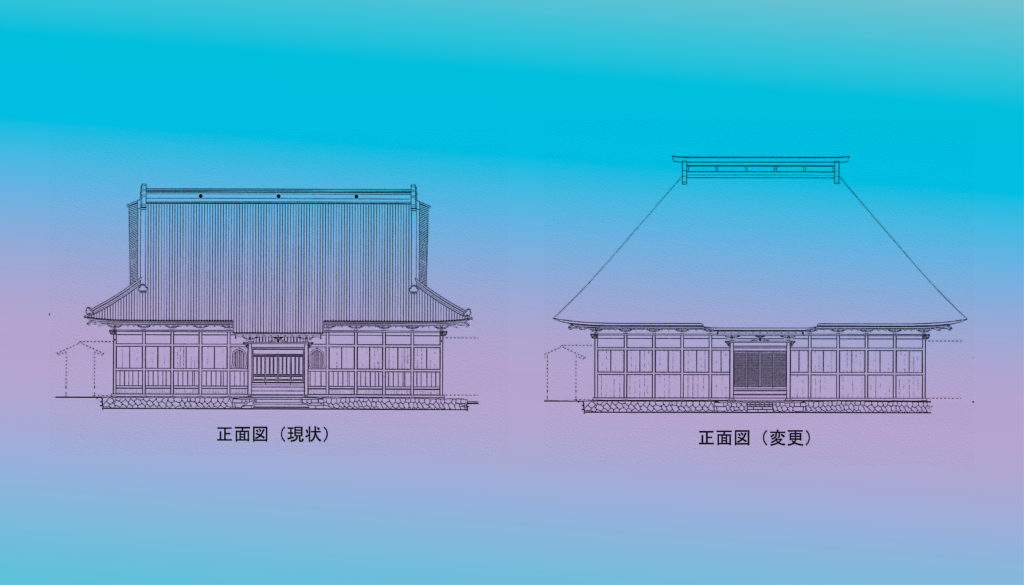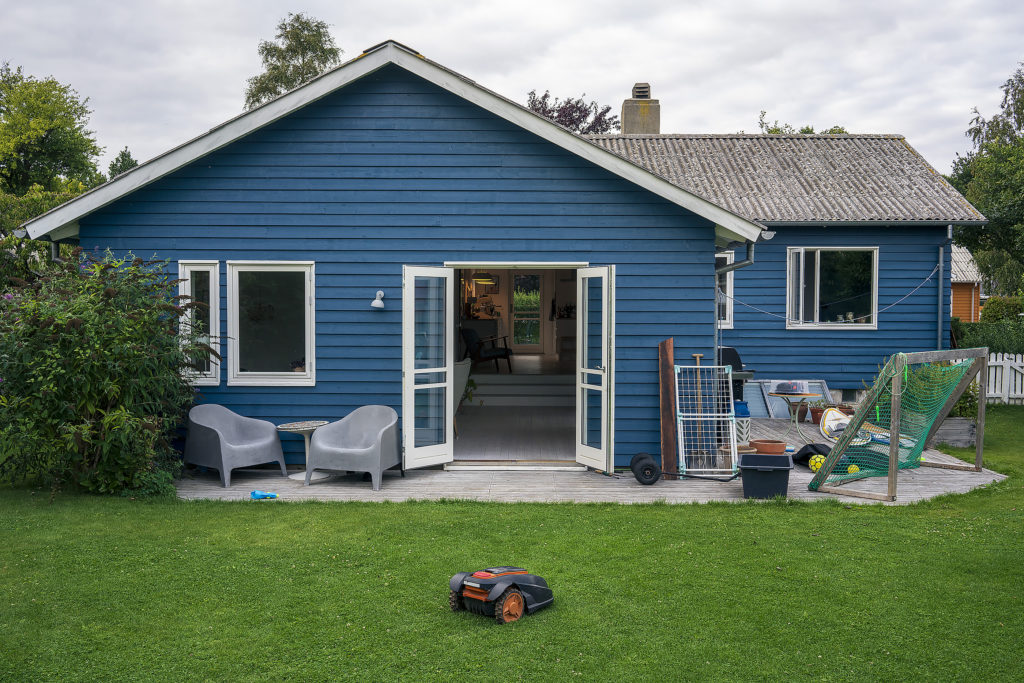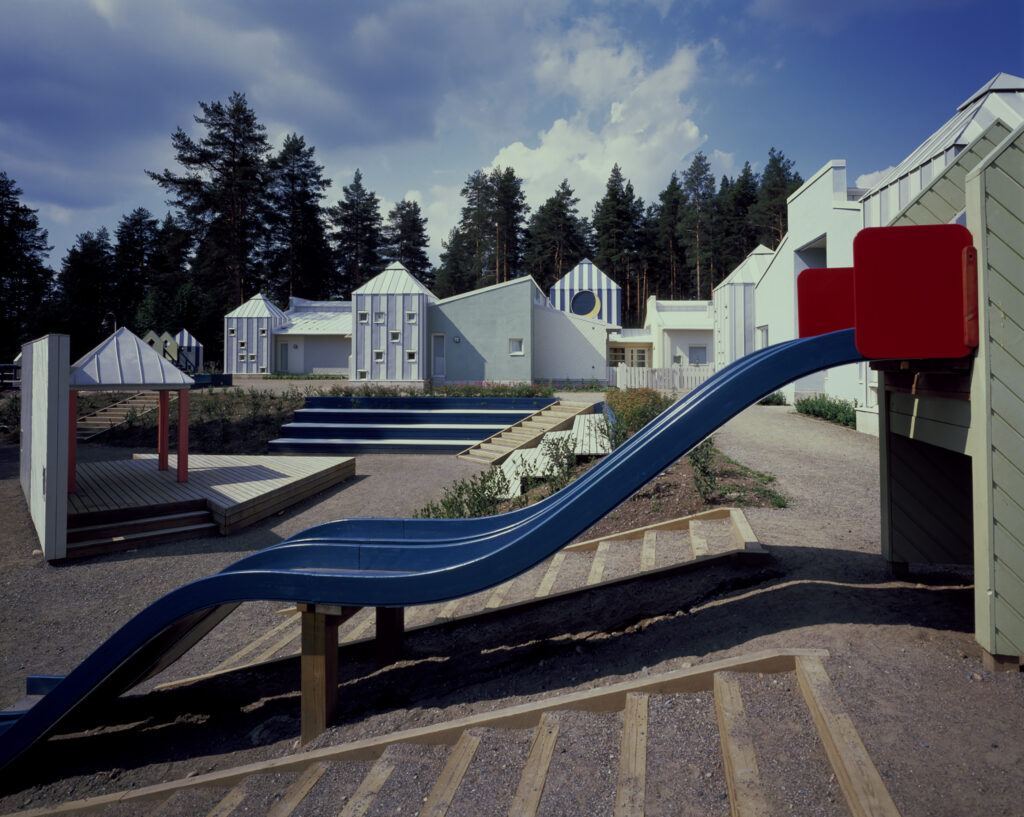Architecture as the Politics of Reconstruction

The ever-worsening climate crisis places the built environment at the center of politics. The key political issues of our time tie in with the ecological reconstruction of society, where architecture plays a central role. The question remains, what the architecture of ecological reconstruction should be like? The text has been originally published in the article collection Architects of Disruption, edited by Vapaa Collective.
I
The shift towards more ecological architecture and society can be understood through at least three different perspectives and focuses. Tier one is centered around the green transition and more sustainable and intelligent design solutions.
Green roofs, solar panels, circular economy, cleantech materials, and new construction technologies are considered vital for us to leap into a carbon-neutral society. This perspective is particularly popular within the construction and business sectors. The climate crisis can even be seen as an opportunity since lowering carbon emissions of existing infrastructure and buildings increases the demand for the construction industry. In politics, this is a perspective where progress is seen as the solution for social and ecological problems.
The second, and in many ways very opposite view of ecological construction is traditionalism and heritage. This perspective is based on the premise that architecture and construction have for thousands of years been sustainable, ecological, and in balance with nature, but that this connection was lost with the development of increasingly complicated construction technologies and materials.
Proponents of this perspective maintain that instead of turning to increasingly automated building systems and structures consisting of multiple materials and parts, architecture should return to massive construction methods and handcraft-driven techniques. The argument is that we have solid historical knowledge and experience of the functionality, wearability, and repairability of these methods. However, politically and on a larger societal scale, traditionalism of this sort raises many questions. To what extent and on what timeframe can a transition to more traditional construction be implemented?
One must imagine, aim and fight for a radically different future and begin to change the world here and now.
My objective with this paper, however, is to map out the third perspective, which can be defined as the return of the political project of modernism. The return of modernism may sound peculiar, to say the least, since it is specifically this worldview connected to modern architecture, which favors progress and novelty while destroying the old and traditional, which has undoubtedly been central to the creation of the ecological and wider societal problems we face today.
Reinforced concrete as a construction material is, for instance, an extremely young invention when seen through the scope of our entire urban and construction history. Ecologically speaking, however, it is highly significant. According to established estimates, concrete production causes as much as 5–8% of global carbon emissions, not to mention the problems caused by its subsequent life cycle. The problems of modernism are not merely technical, either: the worldview behind modern architecture was based on undisputed norms and a rather narrow Western ideal of what kind of progress is desirable.
In terms of politics, on the other hand, modernism entails another kind of tendency related to the rapid and widespread radical reorganization of society: the idea that society can be shaped by architectural means. This perspective does not view reconstruction through any ready or static utopian models, which highlight either progress or a return to the past. Instead, one must imagine, aim and fight for a radically different future and begin to change the world here and now.
Understanding this tradition may help understand also the current ecological reconstruction and the related multitude of political objectives as part of a renewal of modernism. An example of this is the Pritzker Prize awarded in 2021 to the architecture practice Lacaton & Vassal, who continue the tradition of modernism of harnessing architecture as a tool for social change whilst simultaneously challenging the notions of progress and novelty, that were traditionally intrinsic to modernism.
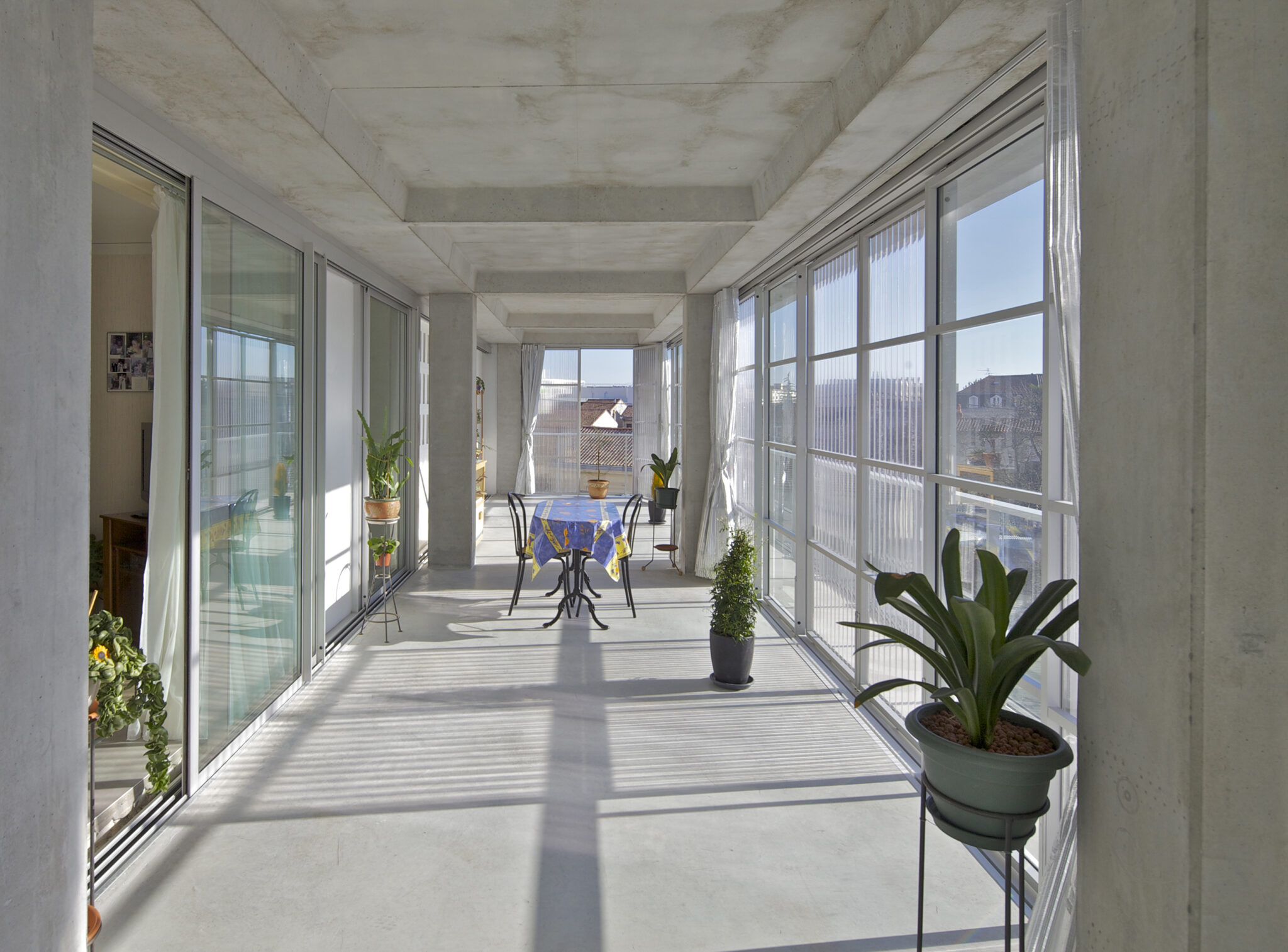
II
Can architecture change society? The utopian project of modernism, contradictory and disputed, boils down to this broad question. It can in many ways seem outdated to attempt to solve housing issues from top-down and through far-reaching utopian visions. But can one interpret this intention to change the world by architectural means in a different way? In my view, ecological reconstruction, which borrows from modernism, can be seen as an attempt to construct a new, more comprehensive understanding of the world, housing, living, as well as future aesthetics and politics.
The World as an Architectural Project, edited by Hashim Sarkis, Roi Salgueiro Barrio, and Gabriel Kozlowski, outlines a multi-faceted historical backdrop to what changing the world through architecture can mean. The book presents various utopian projects from the late 19th to the 21st century, which have challenged prevailing ways of living and notions of present and future. The collection conveys the notion that the various architectural visions and utopias as projections of the world can be the politics ahead of current-day politics.
Architecture cannot be the imagining of a better world for all, free from political interests or ideology.
This should by no means be interpreted as a naïve or problem-free approach. Architecture cannot be the imagining of a better world for all, free from political interests or ideology. It is precisely this way of thinking, an alleged universality, which led to the widespread problems of modernism. Nonetheless, it is important to note the inherently political nature of architecture, which allows us to reframe the question of reconstruction. Architecture not only reflects the changing world but also redefines the question of what the world is and what it means to change it. Architecture in the context of reconstruction thus not only follows political decisions but actively produces a political reality by imagining alternative futures.
In An Architecture Manifesto, the architectural theorist Nadir Lahiji also argues that this more comprehensive political layer of architecture dates back to the dawn of modernism. According to Lahiji, in the early phases of modernism, numerous political changes happened specifically within and throughout architecture and urban planning. The solution to post-war socio-political issues and problems did not only require the political will for change but also the articulation of new questions, new notions on how to create a better everyday life, as established through architecture.
Similar notions crop up during the second half of the 20th century within brutalism, for instance. British architectural essayists Douglas Murphy and Owen Hatherley, amongst others, have written about how the political aspect of brutalism entailed an ambitious attempt to conceptualize a collectively better and radically different future, new public institutions and practices. The neoliberal era starting in the 1980s, seemed, in turn, to bring with it a notion that the future is canceled. Politics became focused on the individual and a so-called capitalist realism. These values were echoed by late 1980s architecture and urban politics in their celebration of privatization.

III
Both early modernism and its later variations, such as brutalism, prove that societal reconstruction and the role architecture plays in it should not only be considered societal problem-solving but also framing of new political questions. In my view, it is precisely this concept of politics, historically linked to modern architecture, which we can draw from with regards to the prevailing ecological and broader societal crises. For instance, the transition to a carbon-neutral society does not only require political decision-making and a change in the political power balance, although also these are manifested through architecture in a seemingly neutral way through the built environment. Rather, the transition requires us to be able to formulate the key ecological issues and objectives and make them visible by architectural means.
One interesting example of such reconstruction policy is the work of architecture firm Lacaton & Vassal. Founded in 1987 by Anne Lacaton and Jean-Philippe Vassal, the office has established itself as an advocate for socially just and more ecologically sustainable architecture. These two recurring themes can be identified in the work of the firm, culminating in their approach to the problematic nature of demolition and new construction.
On an ecological level, the design of Lacaton & Vassal aims to preserve as much as possible of the existing building stock or of the structural frames of individual buildings. One of their best-known works, the 2019 Mies van der Rohe Award winning renovation of Grand Parc Bordeaux, is based around preserving the old concrete framework instead of demolishing it, and on building large balconies and winter gardens around the old facade, which have the additional function of energy-efficient thermal insulation.
The transition to a carbon-neutral society requires us to be able to formulate the key ecological issues and objectives and make them visible by architectural means.
In addition to its ecological aims, the project has ambitious social objectives as well. Grand Parc, consisting of 530 apartments, was originally a modernist social housing project. It was riddled by the same social issues relating to for example multiculturalism and unemployment as other similar modernist areas now facing comprehensive renovation. Demolition and new construction that allow for more social mixing and societal integration are often suggested as a solution to the social problems of such neighborhoods. Lacaton and Vassal, however, represent the opposite view, since for them such residential areas cannot be reduced to causes of social problems, rather, the community and sense of place formed is often in itself significant for residents. Thus, the firm aims to make the eco-social transition on the residents’ terms contrary to many other well-intended renovation projects, which by requiring demolition often end up breaking the social bonds of the community.
To the extent that ecological and social issues are mainstream in current architectural discourse, it is easy to understand why Lacaton & Vassal currently receive considerable attention culminating in the 2021 Pritzker Prize. According to the Pritzker Prize jury, Lacaton & Vassal has restored the utopian effort of the modernist project – to improve the quality of life, not only for a few but for all, by means of a more democratic architecture. In so doing, the practice demonstrates, that renovations to improve energy standards can be undertaken both cost-efficiently and in a way that improves the quality of housing.
Yet, such popularity may tame the original, sometimes even radical political objectives of Lacaton & Vassal, which often challenged the obscure link between modernism and democratic design. The work of Lacaton & Vassal can also be seen as a critique of the future-orientated, progress-minded, and naive interpretation of reconstruction stemming from modernism, where reconstruction is seen as an all-unifying universal political project.
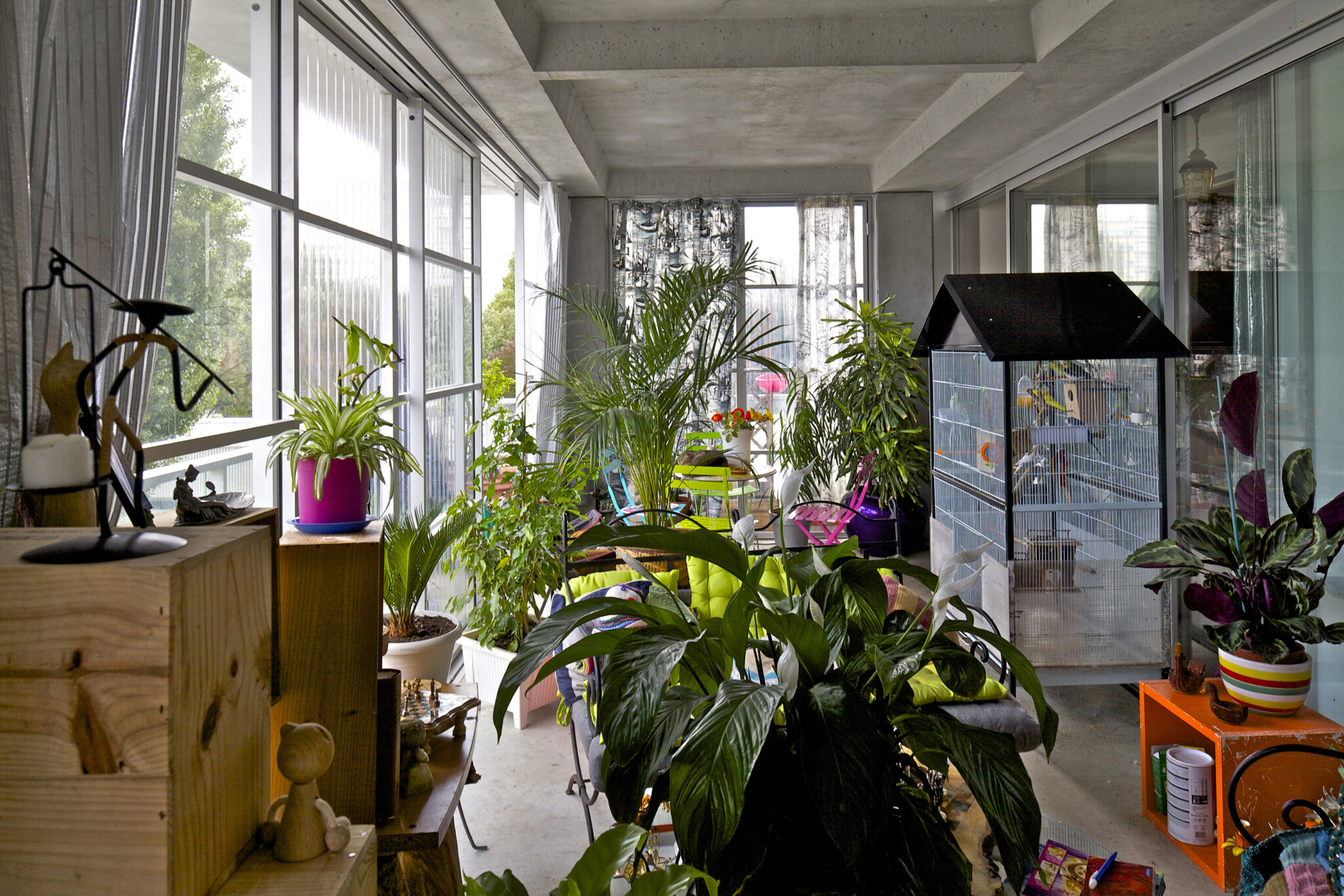
Tahl Kaminer, a researcher of the relationship between architecture and various political strategies, suggests in his work The Efficacy of Architecture, that Lacaton & Vassal could be perceived rather in opposition to modernism, within the tradition of radical democracy, where local organization and autonomy, for instance, are central rather than large-scale change. In this sense, the political dimension of Lacaton & Vassal is smaller in scale and emphasizes local organizations aiming for present change, rather than state-driven, universal and future-orientated modernism, which historically emphasizes reconstruction.
Lacaton & Vassal are indeed closer to new architectural collectives such as Assemble and Raumlabor and their small scale as inspiration for political change. For instance, Grand Parc cannot be traced back simply to an update of a modern building and its democratic nature but rather it invites new political questions: the extension of the facades allows for a variety of unpredictable activities rather than aiming to standardize a way of residing and living, in the spirit of the modernist project. The renovation’s focus on winter gardens suggests that Lacaton and Vassal have taken inspiration from guerrilla gardening, where one specifically aims to use the spaces in originally unintended ways.
In my view, however, it seems the popularity of Lacaton & Vassal is based on reconciling these two conflicting premises: the project of modernism and the critique of it. This contradiction gives rise to a new understanding of how ecological reconstruction should be approached with respect for social sustainability and acknowledgment of the various political actors.
Politics articulated through architecture presents new possibilities, not final solutions.
Our understanding of the interrelation of political change and novelty has also changed. A century ago, reconstruction implied a distinct change in the world, creating something new by modernizing society, whereas reconstruction today seems to imply preservation and reform in relation to what already exists. Where modernism and its related utopias took a clean slate as their starting point, the Lacaton & Vassal reinterpretation of modernism seems to stem from an understanding that sufficient material resources already exist to enable a social and ecological reorganization of life.
Instead of new buildings, we need a renewed political and conceptual shift to analyze this reorganization, which is a reinterpretation of the present and future. Indeed, the concept situation capable is highlighted in the work of Lacaton and Vassal: new possibilities must be unearthed in relation to the present, not just imagined as abstract images, where the future is radically different but without any exploration about how it may be achieved.
Politics articulated through architecture in this sense presents new possibilities, not final solutions. These new policy inputs do not merely resist, restrain or realize political decisions external to architecture in a seemingly neutral way, but rather they change the political system, the sensory constitution, and the state of society. This introduces a new perspective to modernist utopias and to what “changing the world” through architecture means as part of the greater project of reconstruction.

IV
The political importance of architecture has become heightened in recent years. Repeated housing crises, ecological crises, and most recently the organizational challenges of urban and shared space inflicted by the Covid pandemic have shown that current political issues are increasingly related to urban space, the built environment, and material infrastructure design and societal power dynamics, which are mediated through architecture and urban design.
It is clear, therefore, that policy related to climate change is in many ways tied to policy related to the built environment and architecture. The situation is not, however, completely new. Architecture has repeatedly been brought to the forefront during times of societal upheaval, be it to improve the living conditions in the industrializing cities in 19th century utopias, the breakthrough of modernism post World War I, reconstruction post World War II or, later on, the structural change of society, where alongside physical infrastructures, a broader understanding of the values and ways of life in society, is being built. We are in many ways experiencing an era of reconstruction similar to previous historical upheavals. This time, however, the issue at hand concerns not only societal transformation but also the fate of our planet.
Societal crises are critical moments, but they also enable us to radically rethink society.
Times of reconstruction stir up various political imaginaries and utopias: societal crises are critical moments, but they also enable us to radically rethink society. It is precisely in relation to the climate crisis that architecture must find new and broad political meaning by questioning what ways of life are ecologically viable and politically worth pursuing. In this sense, ecologically sustainable design should move beyond form-making to contemplating the conditions and prerequisites for sustainable and unsustainable lifestyles.
Thus, architecture as the politics of reconstruction does not merely respond to today’s most dire and so-called wicked problems or strive to be ecologically sustainable. Instead of architecture just reacting to the most central challenges of our time, that is climate change, the refugee crisis, the Covid pandemic, and so on, it is useful to recognize the broader political dimension of architecture and urban planning, where the notion of the present is being thoroughly redefined.
This paper aims to outline this broader political dimension in relation to updating the political project of modernism in the context of an era of reconstruction. Indeed, it seems that ecological reconstruction must simultaneously continue and challenge the legacy of modernism. A renewed analysis is needed with regards to which extent ecological reconstruction can be perceived without prior modernist notions of progress, unlimited resources, and, at times, rather narrow-minded view of humanity.
In the age of ecological reconstruction, a new collective understanding of housing and life must be created, which does not reproduce political structures and physical infrastructures that bring about new problems. Infrastructures and built environments we have inherited from modern society, continue to define our lives and force people to live in ways considered ecologically unsustainable today. However, it is more crucial to consider whether this built environment is indeed a given and neutral, or do we consider it a stage for political conflict and for devising alternative futures here and now. ↙
ALEKSI LOHTAJA
Doctoral researcher, University of Jyväskylä. Researches the politics of architecture, design, and urban space from the perspective of political philosophy.
The publication Architects of Disruption, edited by Vapaa Collective, is available for free both in Finnish and English at vapaacollective.fi.
SOURCES
Owen Hatherley: Militant Modernism. Zero Books 2009.
Tahl Kaminer: The Efficacy of Architecture: Political Contestation and Agency. Routledge 2017.
Nadir Lahiji: An Architecture Manifesto: Critical Reason and Theories of a Failed Practice. Routledge 2019.
Douglas Murphy: Last Futures: Nature, Technology, and the End of Architecture. Verso 2015.
Hashim Sarkis; Roi Salgueiro Barrio; Gabriel Kozlowski: The World as an Architectural Project. The MIT Press 2019.
